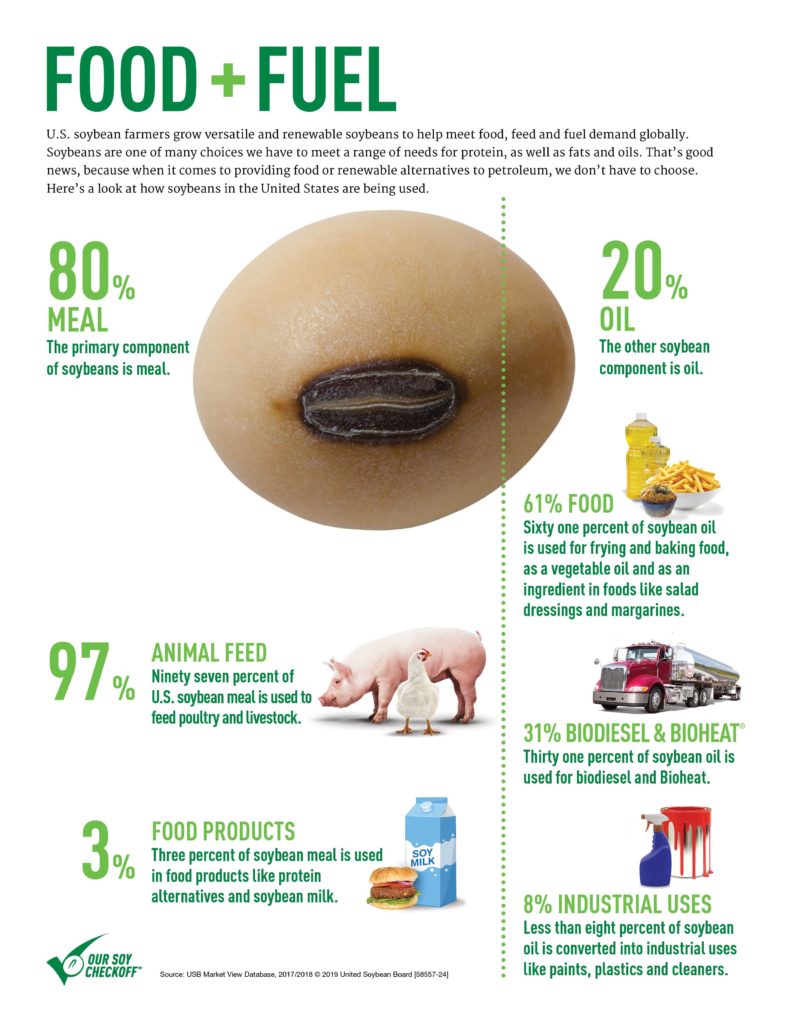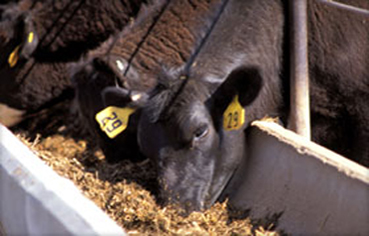Soy New Uses

From soy-based carpet backing to walls and ceilings filled with soy-based insulation, new uses for soy materialize all around us. The soy checkoff helps fund the development of new soy-based products to help increase the demand for U.S. soy.
Soybeans are composed of both protein and oil, opening the door for a variety of uses. Soybean processors can divide soy’s components into soy protein (soybean meal) and soybean oil. Soybean meal, which makes up 80 percent of the soybean, primarily serves as animal feed while the U.S. food industry consumes more than two-thirds of U.S. soybean oil for purposes such as cooking, baking and frying. The remaining soybean meal and oil is applied in industrial applications such as adhesives, coatings and printing inks, lubricants, plastics and specialty products, as well as biodiesel, a renewable alternative to petroleum-based diesel fuel. When it comes to the U.S. soybean supply, there’s room at the table for both human consumption and industrial uses of soybean.
The United Soybean Board maintains an up-to-date list with hundreds of products incorporating soy and where to purchase them.

Why soy?
Soybeans provide a sustainable source of protein and oil worldwide. Soy’s properties allow its use in a variety of applications from animal feed and human consumption to fuel and other industrial uses. Because soy grows throughout the world, it represents a viable and renewable replacement for petrochemicals.
Even while total farmland acreage continues to decline, U.S. soybean production has increased nearly 65 percent since 1980. And, in the same time period, soybean farmers used more sustainable farming practices by reducing energy use and carbon emissions to ensure that soybeans are a viable crop for the next generation of farmers.



